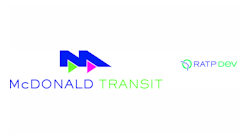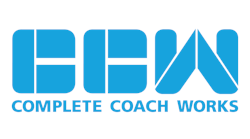Industry leaders provide their best practices on building better labor relations through communication, engagement, training and providing a safe workplace.
Fort Worth, Texas
John P. Bartosiewicz
Chief Operating Officer, McDonald Transit Associates Inc./RATPDEV
The keys here are communication and paying attention to employee needs/desires. These basics work across all levels of employees and with the five international transit unions that can represent our more than 3,000 employees.
Communication is essential at all levels. Clear and comprehensive communication during collective bargaining allows both sides to understand and own the agreed upon positions. Communicating to managers and supervisors the details of a labor agreement and expectations about how the leader expects employees to be treated sets the right tone throughout the organization. Letting employees and the Union know in advance the need for changes in work rules, policies or even benefits eliminates surprises and builds the team. We also follow that up with active collaboration on making changes. Whether this is informal communication or a structured labor/management committee process, the result is positive.
Good labor relations also require consistency. An organization with good labor relations applies discipline consistently across the entire range of infractions and management employees. Nothing hurts the relationship more that favoritism shown by a supervisor. Our managers stay knowledgeable of the disciplinary process and constantly reinforce the “fairness” doctrine with supervisors. Finally, good, consistent communication requires all management employees to be open to discussing anything with an employee or their representative. Frequent active listening and feedback to the individual, regardless of the reasonableness of the idea, creates a bond and avenue for communication for times that may be more critical.
Openness extends to paying attention to employee and Union needs and desires. Having good communication makes managers knowledgeable of what the employees are thinking and wanting. This is very helpful during collective bargaining because it allows both sides to understand priorities and get to “yes”. In many cases, it also makes for good customer service. The employees closest to the customer are in the best position to have ideas that not only make their jobs easier, but benefit the riding public. For example, we actively solicit employee comments on bus schedules. Again, the key here is to listen and get back with a response, even if it is to explain why the idea was not implemented. Establishing a similar relationship with the Union representatives also is part of labor relations success. Nothing solves a thorny issue faster than the manager and Union representative being able to talk candidly about a problem and solution. Be creative in hearing and responding to employee needs. At one of our systems, employees were being challenged with the transition to electronic communication and increased computerization of the workplace. To help, we negotiated a benefit to give all employees a home computer. The cost was reasonable; it helped in the workplace and demonstrated our commitment to the employees and their families.
Remember, good labor relations are more an art than a science. You may not create a masterpiece every day, but keep painting to create a spectacular portfolio.
Concord, Calif.
Rashidi Barnes
Senior Manager of Transportation
County Connection
County Connection is a fairly young public transit organization nestled in the Central Valley of Contra Costa County, 30 miles east of San Francisco. County Connection employs approximately 260 individuals within the Administration, Transportation, or Maintenance Departments. Of that are three (3) bargaining units, which consist of Teamsters Local 856 (Transit Supervisors), Machinist Local 1173 (Mechanics) and the Amalgamated Transit Union (ATU) Local 1605 (Transit Operators).
As the Senior Manager of Transportation, I oversee two (2) bargaining groups, the Teamsters and the ATU. Although both of these groups are managed differently, my management team and I make an effort to employ the same positive team building techniques with both units. I believe that legacy organizational cultures, good or bad, can always acclimate, sometimes organically or by force. No matter which technique you prescribe to, there has to be an open line of communication between all parties. This builds a foundation of trust, which eventually becomes the foundation of a positive symbiotic relationship.
Organizational change is certain, but unfortunately, people tend to resist change. To combat this resistance, there are a few programs/actions that are helping to build positive labor relations:
- Discredit the myth of “Us against Them”
- Truly have an “Open” door policy
- Invest in development of your workforce
- Be present within your organization
-
Discredit the myth “Us against Them”- This may be harder said than done for some transit organizations. County Connection is only 30 years old, yet this attitude permeates our culture daily, stemming from a decade of management practices that were incentive to labor. As a transplant from the private side of public transit, I have always scribed to the notation of “knowing your customer”. This requires me to be engaged, listen and understand that we are all here for one reason, and to transport the masses from point A to point B. There is no County Connection without its labor force and or an effective managerial team. Together, we eliminate any stigma related to “them” and perform as “us” – County Connection.
An aid in this discretization is to reinforce the “team” mentality. Make sure that daily messaging to all employees emphasizes the importance of a team and how everyone’s role is critical to the success of the organization. Another technique that I have instilled in my team is avoiding the use of words that perpetuate the notion of a divide between labor and management.
- “Open” door policy – Unless I am in a meeting, my door stays open. It is remarkable how many employees notice the rare occasions that my door is closed. Yes I am very busy, but remaining engaged in my employees’ daily work life is important to me. In cooperation with the office of the General Manager (GM), I have implemented a monthly meeting between transit operators and the GM. The program allows for an offsite meeting to be held over coffee, where the GM and transit operators have the opportunity to get to know each other outside of County Connection. This has truly aided in allowing operators to be able to sometimes vent their frustrations as well as forge a relationship with the GM.
- Invest in the development of your workforce – Continued education and or local technical training programs help build the workforce. To me, this is strategic in developing a strong, effective, and diverse set of personnel. County Connection values the investments in employees’ professional growth which in turn generates a progressive workforce that continues to push the organization forward.
- Be present within your organization – I make sure that I am in early and leave late. Once or twice a month, I show up at AM pullout to demonstrate that I am committed to supporting my workforce, no matter the time of day. Have you ever seen the look on an Operator’s face when you board their bus during revenue service or walk the bus yard during PM pullout just to shake hands with them? You will be surprised how many Operators or Supervisors take notice of the extra effort that you have put forth to be present within the organization.
Building and maintaining good relationships with your labor force is a daily endeavor. The needed effort can be equated to the effort needed to maintain a healthy and strong marriage. Inevitably, there will be days that you do something that upsets your spouse and vice versa. However, if the focus is on progressing and strengthening the marriage, those “bad” days will measure close to nothing compared to the lifetime of success working together for the greater good. I am committed to building positive relationships with my staff and moving forward together towards the success of County Connection.
Riverside, Calif.
Ana M. Elias
Human Resources Manager
Complete Coach Works
CCW is a family-owned transportation solution provider. Throughout its hardworking history, Complete Coach Works established a reputation for quality and excellence in the transit industry. It seeks ambitious and flexible workers whose core values align with CCW. The company recruits top talent and develops a diverse group of the most qualified and committed individuals, helping them reach their full potential through quality training and a variety of opportunities for career development.
Career Development
One of the company’s biggest priorities is career development, emphasizing educational training. Not only does the company offer tuition reimbursement for training courses but employees can also potentially earn cash bonuses upon acquiring ASE certifications. The employee will earn an incentive for each new acquired certification, plus a significantly higher incentive bonus upon completion of the level seven certification becoming a Master Transit Bus Technician.
The first step to growth is showing interest. Human Resources is one of the best sources for information and will research educational opportunities on the employee’s behalf. Several team members were recently promoted because they communicated their interest, proved their dedication, demonstrated a desire for higher learning and worked closely with management.
Every Wednesday, an industry professional visits CCW to offer an educational session for employees on specific industry-related topics. On top of offering resources for internal educational training, the company also enrolls employees in local college courses and conferences to provide further growth opportunities. Management and supervisors are also welcome to enroll and refresh, gaining additional insight in an area of expertise.
Safety First
As a bus remanufacturing company offering a vast array of transportation solutions, employees often work hands-on with automotive parts and machinery. All employees learn about safety from the moment they are hired and agree to take necessary measures to ensure overall safety, personally and externally. The goal is to prevent injuries altogether and provide a safe workplace.
CCW employs a safety committee, which meets monthly and is responsible for making safety equipment available, identifying safety hazards, minimizing issues and taking preventative steps. If the company goes without injury for four weeks, employees are rewarded with complimentary lunch. The company divides departments into work teams, one of which is currently at 1,275 work days without injury.
Employee Engagement and Retention
It takes more than educational perks and ensuring safety to keep team members happy. Supervisors meet and provide feedback to employees daily. Most recently, the CCW team celebrated Employee Appreciation Day, where several employees won raffle prizes.
The company also encourages carpooling by offering company vehicles to groups of employees commuting from similar areas and providing a per diem, if employees choose to carpool independently.
Currently, the company is rapidly growing with some of the best leaders in the industry providing hands-on experience to more than 350 expert employees. When an employee reaches five years with the company, an honorary plaque is awarded. The number of plaques ordered continues to increase annually, signifying the positive work environment CCW provides its team members
Silver Spring, Md.
Brian Turner
Founding Director
Transportation Learning Center
Good labor relations are built on a foundation of effective relationships between management and labor across multiple areas of shared concern. It’s easiest, and most productive, to build those positive relationship around issues where both labor and management can best win by working together. Skill training and safety are two areas where management and labor can only reach their separate goals by working together in productive joint efforts.
Training and safety have been the targets of national and local partnership programs developed with the industry over the past 15 years by the Transportation Learning Center. These joint data-driven efforts develop good habits of joint efforts for joint analysis and problem solving. Leaders from both labor and management learn to know each other and, more importantly, recognize what it takes to succeed in solving problems together.
The best frontline workforce training programs in the US and in other countries are built on labor-management partnerships for apprenticeship training. Over the past dozen years US public transportation has started to develop similar programs to address a critical shortage of quality training capacity, a generational wave of skilled blue collar retirements and constantly changing technologies. With support from FTA, TCRP and US DOL, management and labor experts from more than 40 agencies have come together over the past dozen years in training consortia to define consensus national training standards for six key frontline occupations: Maintenance Technicians for Bus, Rail Car, Elevator-Escalator and Traction Power, along with Transit Bus Operators. These joint consortia have already developed national apprenticeship frameworks endorsed by US DOL in three of these occupations. Local transit management and labor have taken the next step in building local training partnerships to design and implement quality standards-based training programs. These much needed training programs are jointly designed and jointly owned. Both the affected workforce and managers are fully engaged in developing and sustaining these programs that matter to managers, workers and the riding public. Their success benefits everyone. And both sides work – and they work together – to assure the continuing effectiveness of these critical efforts.
The same logic of joint stakeholder engagement and joint ownership applies equally to successful safety programs. A successful, positive safety culture, by definition, has to be ingrained in the consciousness of every employee. In our industry, with more than 90 percent of the frontline workforce represented by labor unions, successful safety systems that achieve proactive workforce engagement are most reliably produced by labor and management working together in developing, implementing, and monitoring them for continuous improvement. Innovations like joint safety committees, joint safety inspections, and joint incident investigations engage labor and management in shared efforts to improve safety for the public and the workforce. Near-miss incident reporting systems now being introduced into transit from models developed with great success in the airline industry provide excellent forums for ongoing problems solving and continuous improvement in safety. This is more effective than the old, counter-productive focus on blame and discipline.
These types of joint efforts provide a strong foundation on which transit organizations can build broader positive relationships, including projects to update job descriptions, improve quality and cut costs. All of these collaborative programs build the practice of data-driven problem solving on the basis of respectful relationships. This is a great foundation for successful “labor relations” in our industry.




